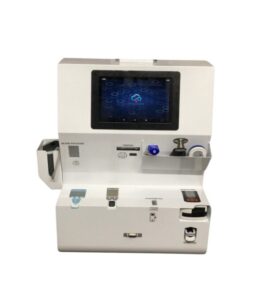What Are The Applications Of PTFE?
4 min readSince 1938, polytetrafluoroethylene (PTFE) has been in use as a versatile polymer, and it is also a synthetic fluoropolymer of tetrafluoroethylene. PTFE is an exceedingly versatile substance with a broad range of applications. It is hydrophobic, non-wetting, has high density, and shows resistance to extreme temperatures.
Its non-stick characteristics are likely its most well-known feature. There are different grades of PTFE, such as Virgin PTFE, Glass Filled PTFE, Bronze Filled PTFE, Carbon Filled PTFE, and Stainless Steel Filled PTFE.
Various Applications Of PTFE You Should Know About
There are several uses of PTFE parts and PTFE coating in many industrial and consumer applications. Carbon and fluorine are the two primary parts of PTFE, and due to that, PTFE has an elevated molecular weight, which has various benefits. For instance, PTFE shows resistance to water and other water-containing compounds.
PTFE is also relatively heat resistant and withstands friction against solids. As a result, PTFE is in use to make gears, bearings, and sliding plates. PTFE does not start to deteriorate until it attains 662 degrees Fahrenheit.
PTFE is available in both liquid and powder forms. PTFE can be garnished on materials and incorporated with other liquid or solid components to strengthen them. Pyrotechnics and decoy flares employ the powder form. In the aerospace sector, PTFE powder is utilized as an igniter for solid-fuel rocket propellants. A few high-end safes for cars come with PTFE coating as well.
Non-stick Cookware
Teflon, which is in use to produce non-stick cookware, is probably the most well-known PTFE application.
To Deter Insects From Climbing Walls
PTFE’s non-stick characteristics are so strong that even a lizard cannot stick on it when the wall has this coating. As a result, PTFE is in use to deter insects from moving on the walls.
Dental Field
The non-stick qualities of PTFE have also been in use in the dental profession to keep fillings from clinging to neighboring teeth.
Manufacture Pipes And Containers
Since it is non-reactive and anti-corrosive, PTFE is also utilized to build containers and pipes. It is crucial for laboratories to store very corrosive compounds in glass cartons. PTFE also has increased tensile strength due to its carbon-fluorine bonding.
Lubricant For Machines
PTFE is in use as a machine lubricant as well. PTFE has the potential to decrease friction, consumption of power, and appliance wear when utilized in this manner.
Weaving Socks
PTFE can also be used to make fiber for sock weaving. The socks are very soft due to the minimal friction of the PTFE, which safeguards feet from blisters.
Manufacture Gaskets
Due to its strength and resistance power to heat, PTFE is also utilized to produce gaskets. It is also in use as a plumbing thread seal tape.
Insulate Cables And Connector Assemblies
PTFE is also in use to protect cables and connector assemblies due to its high electrical insulation qualities. It is perfect for connection wire, coaxial cord, and printed circuit boards.
Other Applications
PTFE is used to make clothes, carpets, and wall coverings that show resistance to stains and also for weatherproof outdoor indications. PTFE is in use for numerous medicinal applications, including vascular grafts. The baby stroller manufacturer companies also use PTFE.
A fiberglass cloth with a PTFE coating is perfect to safeguard the airports’ roofs and stadium ceilings. PTFE can also be found in several consumer products, such as outdoor apparel, school costumes, shoes, insoles, and orthotics.
What Are Byproducts Of PTFE
Despite PTFE being non-toxic, its manufacturing process generates harmful byproducts, such as hydrofluoric acid and carbon dioxide. In order to avoid gas exposure when PTFE is heated or as it cools after sintering, the production areas need to be well ventilated.
Those who have inhaled the gaseous byproducts of PTFE production were diagnosed with polymer fume fever, which is reported by doctors. When PTFE parts are made, workers also should be safeguarded from inhaling PTFE dust.
Some trash from the manufacturing process can be recycled. Manufacturers had a strong motivation to discover ways to utilize leftover substances since PTFE was initially very costly to make.
The waste from the production procedure can be cleaned and ground into a fine powder. It is possible to use this powder for molding or as an addition to specific oils, lubricants, and inks. As burning PTFE at increased temperatures discharges hydrogen chloride and other harmful chemicals, used PTFE parts need to be concealed in landfills rather than burnt.
According to a study, PTFE dissolves in the environment into a single chemical that is hazardous to plants, which is trifluoroacetate. At present, TFA levels are pretty low, but the material lasts a long period. As a result, TFA contamination may be a future worry.
Conclusion
Though the most popular and well-known application of PTFE is non-stick cookware, there are several other uses of Teflon. As you can see, it is used in several fields, including medical, aerospace, machine manufacturing, construction, clothing, and many more.






